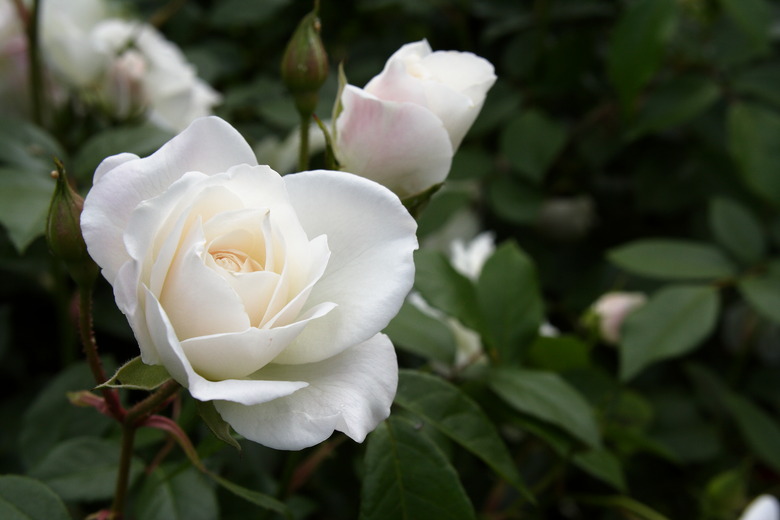How To Prune Iceberg Roses
The Iceberg rose (Rosa 'KORbin' ICEBERG, USDA zones 5-9) has been beloved to home gardeners since it was first introduced as a floribunda in 1958 by rose breeder Reimer Kordes in Germany. Known for its powerful fragrance and disease resistance, Icebergs are particularly renowned for their vigorous growth and brilliant white blooms.
These same blooms grace the Iceberg climber (Rosa 'Iceberg,'Cl.), a related cultivar developed by Cants of Colchester in the UK in the 1960s. How you prune an Iceberg rose depends on whether you have a floribunda, which is a bush form, or a climber.
The Iceberg rose is a repeat bloomer that has some shade tolerance. In fact, the blooms are known to better retain their very-bright white color if they're planted in a partial-shade location.
Pruning an Iceberg Floribunda
Pruning an Iceberg Floribunda
Pruning an Iceberg floribunda is similar to pruning any other floribunda. They are bushier plants than some other varieties such as hybrid teas or shrub roses. Prune in late winter or early spring before new growth emerges. In colder climates, wait until March to ensure that fresh cuts are not subject to hard freezes.
Floribundas produce clusters of flowers, as opposed to some varieties such as hybrid teas that produce large, single flowers. When pruning, leave floribunda stems longer than you would those of hybrid teas in order to promote the formation of these masses of blooms. First, cut out dead, diseased or crossing canes. Try to retain an open center to ensure good air circulation.
Cut the remaining, healthy canes to about 1 foot. If a cane is less vigorous, let it retain more height. If the rose is a few years old, consider pruning some older stems to just a few inches from the level of the soil to promote the development of new canes from the base.
Pruning an Iceberg Climber
Pruning an Iceberg Climber
The most important — in fact, critical — thing to know about pruning an Iceberg climber is that it blooms only on old wood, unlike the floribunda variety. Let's repeat it: old wood only. The term "old wood" refers to growth that appeared the previous year before blooms. This means that you can't prune out this season's canes if you want blooms next season. Note that this isn't necessarily true of all climbing roses, so if you're caring for other climbing cultivars, familiarize yourself with their specific growing characteristics.
Here's how to do it: Immediately after flowering, prune lightly to remove old flowers and the canes they grew on. Take care to retain the newer canes which will be greener and more supple, as these will produce flowers the following summer. There's no need to do a heavy pruning, since the goal of a climbing rose is to, well, climb! Its canes may reach 15 feet or higher, and if you want to retain the height, you shouldn't prune them out each season.
Go ahead and remove canes that are unhealthy, spindly or misshapen — for example, canes that are crossing, diseased or just don't complement your vision for how you want your climber to look. When you remove a cane completely, make sure you remove it close to the base using a 45 degree-angle cut so water will run off the wound rather than sit.
